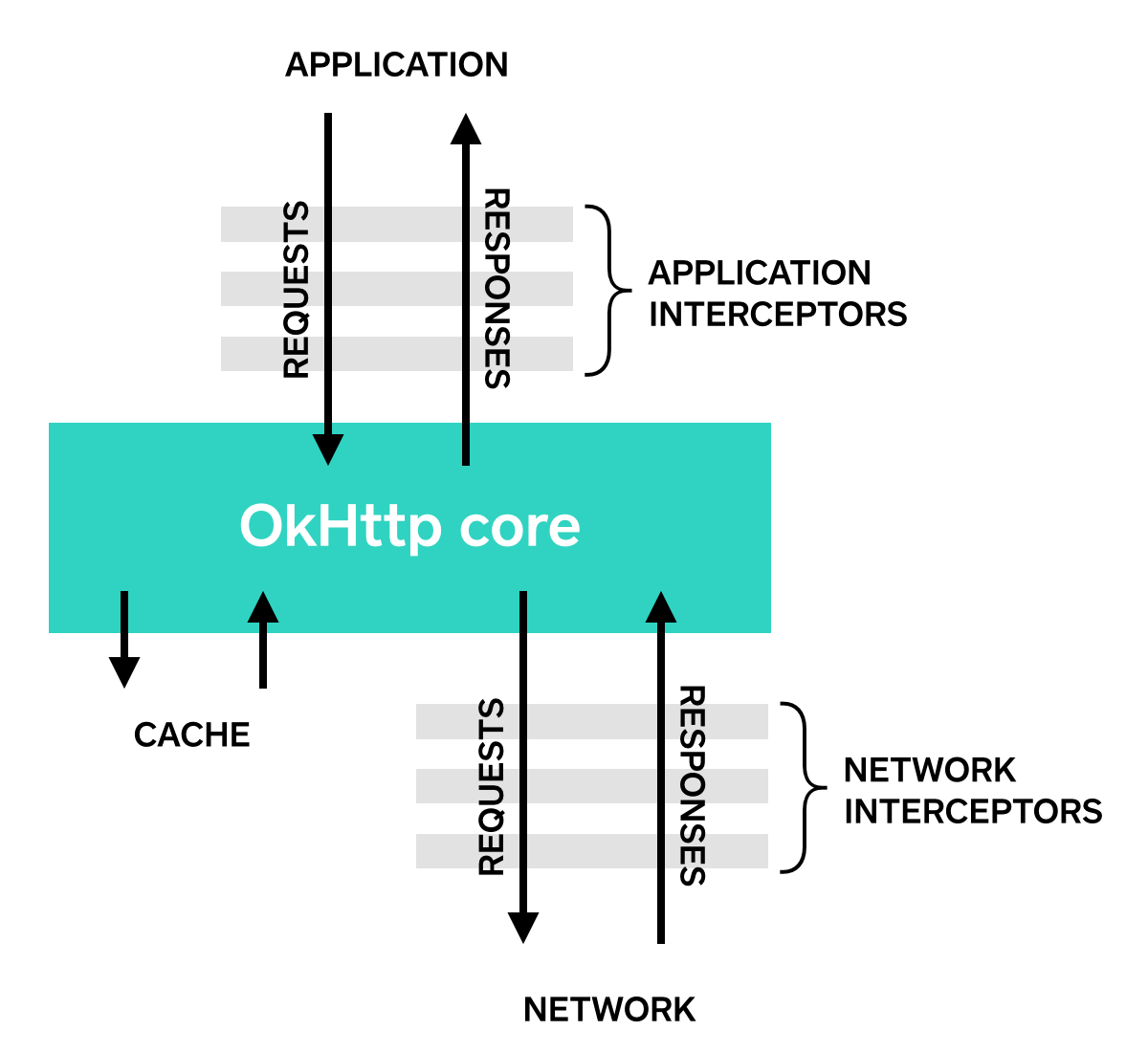Android 网络框架学习之OKHttp
OKHTTP
使用要求:对于Android:2.3以上,对于Java:java7以上
安装:
<dependency> <groupId>com.squareup.okhttp</groupId> <artifactId>okhttp</artifactId> <version>2.3.0</version> </dependency>Gradle:
compile 'com.squareup.okhttp:okhttp:2.3.0'
GET A URL
同步GET:
private final OkHttpClient client = new OkHttpClient();
public void run() throws Exception {
Request request = new Request.Builder()
.url("http://publicobject.com/helloworld.txt")
.build();
Response response = client.newCall(request).execute();
if (!response.isSuccessful()) throw new IOException("Unexpected code " + response);
Headers responseHeaders = response.headers();
for (int i = 0; i < responseHeaders.size(); i++) {
System.out.println(responseHeaders.name(i) + ": " + responseHeaders.value(i));
}
System.out.println(response.body().string());
}
异步GET:
private final OkHttpClient client = new OkHttpClient();
public void run() throws Exception {
Request request = new Request.Builder()
.url("http://publicobject.com/helloworld.txt")
.build();
client.newCall(request).enqueue(new Callback() {
@Override public void onFailure(Request request, Throwable throwable) {
throwable.printStackTrace();
}
@Override public void onResponse(Response response) throws IOException {
if (!response.isSuccessful()) throw new IOException("Unexpected code " + response);
Headers responseHeaders = response.headers();
for (int i = 0; i < responseHeaders.size(); i++) {
System.out.println(responseHeaders.name(i) + ": " + responseHeaders.value(i));
}
System.out.println(response.body().string());
}
});
}
访问Header:
private final OkHttpClient client = new OkHttpClient();
public void run() throws Exception {
Request request = new Request.Builder()
.url("https://api.github.com/repos/square/okhttp/issues")
.header("User-Agent", "OkHttp Headers.java")
.addHeader("Accept", "application/json; q=0.5")
.addHeader("Accept", "application/vnd.github.v3+json")
.build();
Response response = client.newCall(request).execute();
if (!response.isSuccessful()) throw new IOException("Unexpected code " + response);
System.out.println("Server: " + response.header("Server"));
System.out.println("Date: " + response.header("Date"));
System.out.println("Vary: " + response.headers("Vary"));
}POST TO A SERVER
Posting a String:
public static final MediaType jsonReq
= MediaType.parse("application/json; charset=utf-8");
OkHttpClient client = new OkHttpClient();
String post(String url, String json) throws IOException {
RequestBody body = RequestBody.create(jsonReq, json);
Request request = new Request.Builder()
.url(url)
.post(body)
.build();
Response response = client.newCall(request).execute();
return response.body().string();
}Posting Streaming:
public static final MediaType MEDIA_TYPE_MARKDOWN
= MediaType.parse("text/x-markdown; charset=utf-8");
private final OkHttpClient client = new OkHttpClient();
public void run() throws Exception {
RequestBody requestBody = new RequestBody() {
@Override public MediaType contentType() {
return MEDIA_TYPE_MARKDOWN;
}
@Override public void writeTo(BufferedSink sink) throws IOException {
sink.writeUtf8("Numbers\n");
sink.writeUtf8("-------\n");
for (int i = 2; i <= 997; i++) {
sink.writeUtf8(String.format(" * %s = %s\n", i, factor(i)));
}
}
private String factor(int n) {
for (int i = 2; i < n; i++) {
int x = n / i;
if (x * i == n) return factor(x) + " × " + i;
}
return Integer.toString(n);
}
};
Request request = new Request.Builder()
.url("https://api.github.com/markdown/raw")
.post(requestBody)
.build();
Response response = client.newCall(request).execute();
if (!response.isSuccessful()) throw new IOException("Unexpected code " + response);
System.out.println(response.body().string());
}
Posting a File:
public static final MediaType MEDIA_TYPE_MARKDOWN
= MediaType.parse("text/x-markdown; charset=utf-8");
private final OkHttpClient client = new OkHttpClient();
public void run() throws Exception {
File file = new File("README.md");
Request request = new Request.Builder()
.url("https://api.github.com/markdown/raw")
.post(RequestBody.create(MEDIA_TYPE_MARKDOWN, file))
.build();
Response response = client.newCall(request).execute();
if (!response.isSuccessful()) throw new IOException("Unexpected code " + response);
System.out.println(response.body().string());
}
Posting from parameters:
private final OkHttpClient client = new OkHttpClient();
public void run() throws Exception {
RequestBody formBody = new FormEncodingBuilder()
.add("search", "Jurassic Park")
.build();
Request request = new Request.Builder()
.url("https://en.wikipedia.org/w/index.php")
.post(formBody)
.build();
Response response = client.newCall(request).execute();
if (!response.isSuccessful()) throw new IOException("Unexpected code " + response);
System.out.println(response.body().string());
}
Posting a multipart request:
private static final String IMGUR_CLIENT_ID = "...";
private static final MediaType MEDIA_TYPE_PNG = MediaType.parse("image/png");
private final OkHttpClient client = new OkHttpClient();
public void run() throws Exception {
// Use the imgur image upload API as documented at https://api.imgur.com/endpoints/image
RequestBody requestBody = new MultipartBuilder()
.type(MultipartBuilder.FORM)
.addPart(
Headers.of("Content-Disposition", "form-data; name=\"title\""),
RequestBody.create(null, "Square Logo"))
.addPart(
Headers.of("Content-Disposition", "form-data; name=\"image\""),
RequestBody.create(MEDIA_TYPE_PNG, new File("website/static/logo-square.png")))
.build();
Request request = new Request.Builder()
.header("Authorization", "Client-ID " + IMGUR_CLIENT_ID)
.url("https://api.imgur.com/3/image")
.post(requestBody)
.build();
Response response = client.newCall(request).execute();
if (!response.isSuccessful()) throw new IOException("Unexpected code " + response);
System.out.println(response.body().string());
}
Posing Json with Gson
private final OkHttpClient client = new OkHttpClient();
private final Gson gson = new Gson();
public void run() throws Exception {
Request request = new Request.Builder()
.url("https://api.github.com/gists/c2a7c39532239ff261be")
.build();
Response response = client.newCall(request).execute();
if (!response.isSuccessful()) throw new IOException("Unexpected code " + response);
Gist gist = gson.fromJson(response.body().charStream(), Gist.class);
for (Map.Entry<String, GistFile> entry : gist.files.entrySet()) {
System.out.println(entry.getKey());
System.out.println(entry.getValue().content);
}
}
static class Gist {
Map<String, GistFile> files;
}
static class GistFile {
String content;
}
Response Caching:
一个缓存目录同时拥有多个缓存访问是错误的。大多数程序只需要调用一次 new OkHttp() ,在第一次调用时配置好缓存,然后其他地方只需要调用这个实例就可以了。否则两个缓存示例互相干扰,破坏响应缓存,而且有可能会导致程序崩溃。
响应缓存使用HTTP头作为配置。你可以在请求头中添加 Cache-Control: max-stale=3600 ,OkHttp缓存会支持。你的服务通过响应头确定响应缓存多长时间,例如使用 Cache-Control: max-age=9600 。
private final OkHttpClient client;
public CacheResponse(File cacheDirectory) throws Exception {
int cacheSize = 10 * 1024 * 1024; // 10 MiB
Cache cache = new Cache(cacheDirectory, cacheSize);
client = new OkHttpClient();
client.setCache(cache);
}
public void run() throws Exception {
Request request = new Request.Builder()
.url("http://publicobject.com/helloworld.txt")
.build();
Response response1 = client.newCall(request).execute();
if (!response1.isSuccessful()) throw new IOException("Unexpected code " + response1);
String response1Body = response1.body().string();
System.out.println("Response 1 response: " + response1);
System.out.println("Response 1 cache response: " + response1.cacheResponse());
System.out.println("Response 1 network response: " + response1.networkResponse());
}
Canceling a Call
final Call call = client.newCall(request);
call.cancel();
Timeouts:
private final OkHttpClient client;
public ConfigureTimeouts() throws Exception {
client = new OkHttpClient();
client.setConnectTimeout(10, TimeUnit.SECONDS);
client.setWriteTimeout(10, TimeUnit.SECONDS);
client.setReadTimeout(30, TimeUnit.SECONDS);
}
Handling Authentication:
private final OkHttpClient client = new OkHttpClient();
public void run() throws Exception {
client.setAuthenticator(new Authenticator() {
@Override public Request authenticate(Proxy proxy, Response response) {
System.out.println("Authenticating for response: " + response);
System.out.println("Challenges: " + response.challenges());
String credential = Credentials.basic("jesse", "password1");
return response.request().newBuilder()
.header("Authorization", credential)
.build();
}
@Override public Request authenticateProxy(Proxy proxy, Response response) {
return null; // Null indicates no attempt to authenticate.
}
});
Request request = new Request.Builder()
.url("http://publicobject.com/secrets/hellosecret.txt")
.build();
Response response = client.newCall(request).execute();
if (!response.isSuccessful()) throw new IOException("Unexpected code " + response);
System.out.println(response.body().string());
}为避免当验证失败时多次重试,我们可以通过返回null来放弃验证: if (responseCount(response) >= 3) {
return null; // If we've failed 3 times, give up.
}
//添加以下方法
private int responseCount(Response response) {
int result = 1;
while ((response = response.priorResponse()) != null) {
result++;
}
return result;
}
Interceptors
class LoggingInterceptor implements Interceptor {
@Override public Response intercept(Chain chain) throws IOException {
Request request = chain.request();
long t1 = System.nanoTime();
logger.info(String.format("Sending request %s on %s%n%s",
request.url(), chain.connection(), request.headers()));
Response response = chain.proceed(request);
long t2 = System.nanoTime();
logger.info(String.format("Received response for %s in %.1fms%n%s",
response.request().url(), (t2 - t1) / 1e6d, response.headers()));
return response;
}
}
Application Interceptors:
OkHttpClient client = new OkHttpClient(); client.interceptors().add(new LoggingInterceptor());
Network Interceptors
OkHttpClient client = new OkHttpClient(); client.networkInterceptors().add(new LoggingInterceptor());
郑重声明:本站内容如果来自互联网及其他传播媒体,其版权均属原媒体及文章作者所有。转载目的在于传递更多信息及用于网络分享,并不代表本站赞同其观点和对其真实性负责,也不构成任何其他建议。




































